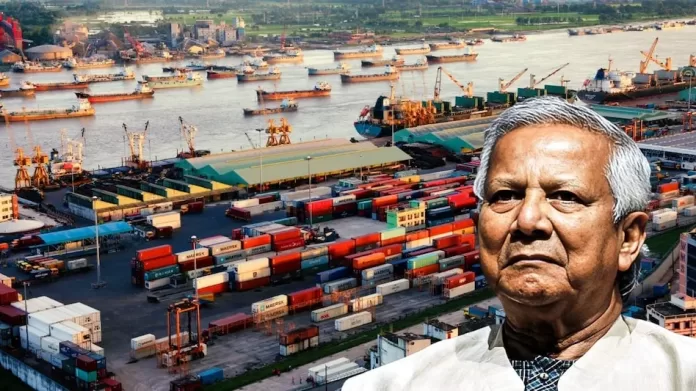

Since March 26, 1971, Pakistan has remained Bangladesh’s staunch enemy. But after the fall of the Sheikh Hasina government on August 5, 2024, and with Nober laureate Muhammad Yunus taking charge, the entire scenario seems to have shifted dramatically. The very India that helped Bangladesh gain global recognition is now being challenged, as Bangladesh draws closer to Pakistan and even dares to stare down India with China’s support. However, the Indian government has also stepped up, ready to counter these developments. As part of its response, India has suspended export facilities for Bangladesh.
On April 8, 2025, the Central Board of Indirect Taxes and Custom issued a notification announcing the suspension of the transshipment facility for Bangladeshi export cargo. The following day, Ministry of External Affairs spokesperson Randhir Jaiswal explained that this facility had been causing operational challenges at Indian airports and ports. He clarified, however, That Dhaka could still export goods to Nepal and Bhutan Via India.
This Transshipment facility , granted by India in 2020, allowed Bangladesh to transport export goods through Indian territory to countries like Nepal, Bhutan, and Myanmar. But now, India has imposed certain restrictions in light of new developments.
Notably, just before this decision, Muhammad Yunus had stirred controversy by invoking India’s northeastern states during his recent visit to China. On March 28, 2025, during that trip, he proposed boosting trade through sea routes and invited China to set up manufacturing units in Bangladesh for mutual economic gain.
While in China, Yunus pointed out that India’s seven northeastern states are landlocked and do not have direct access to the sea. Since Bangladesh is the only geographic gateway to this region, he encouraged China to invest and expand trade via Bangladesh. He even went a step further by inviting China to build an airbase in Lalmonirhat.
This proposal immediately put India on high alert. Lalmonirhat is located close to the siliguri Corridor in West Bengal- also known as the ‘Chicken’s Neck’ a narrow strip of land that connects India’s northeastern states (Arunachal Pradesh, Assam, Manipur, Meghalaya, Mizoram, Nagaland, Sikkim, and Tripura) with the rest of the country.
To put things in perspective, the Chicken’s Neck is just 60 kilometers long and about 22 kilometers wide. It borders sensitive regions such as Sikkim and Arunachal; invitation to China poses a direct challenge to India’s national security.
However, the Chicken’s Neck is heavily guarded. The India Air Force, Army, Border Security force, advanced radar systems, missile deployments, and high-level defense security are all actively stationed in the region. Additionally, the Assam Rifles and Bengal Police also maintain a strong presence, ensuring this vital corridor remains secure.
Shashi Rai













